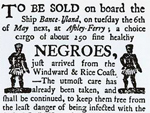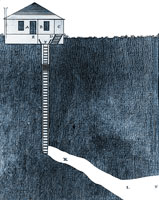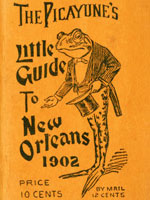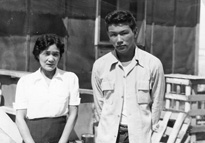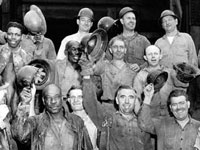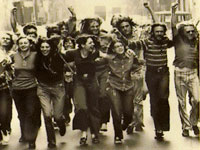Good question and one that is often answered a bit too narrowly. The key issue is whether trade routes promoted resource extraction and/or economic development, and if the latter, what sort of development. Of course, the most famous route, with the greatest impact on New World colonies, was the Triangular Trade, which had some variants. In addition, though, there were several versions of a simpler two-way transatlantic trade, from the UK to the northern colonies, from France to Quebec, and from Spain/Portugal to Latin American places. Last, and less known, a transpacific trade took shape in the 17th century, connecting the Philippines with Mexico through the west coast port of Acapulco. So here we have at least half dozen routes to assess in terms of impacts.
These ventures, plus those made by Spanish and Portuguese slavers extracted over nine million Africans from their home terrains between the 16th and 19th centuries
The core of the triangular trade, ca. 1600-1800, was the exchange of slaves for materials and goods – African captives brought to eastern Atlantic ports, exchanged for gold or British manufactured products, then transshipped brutally to colonial depots – Charleston, New Orleans, the Caribbean islands, and in smaller numbers, New York, for example. There, captives were again sold, for cash or goods (sugar, tobacco, timber) which returned to a UK starting point (often Liverpool). Yet this sequence was not the only one, particularly in New England, where merchants sent rum and other North American goods to Africa, secured slaves for auction to sugar plantations in the Caribbean, and brought liquid sugar (molasses) to American shores for distillation into more rum. Though this sounds tidy, actually, rarely was either triangle completed by one ship in one voyage; each triangle stands more as a mythical model than a description of standard practice. Nonetheless these ventures, plus those made by Spanish and Portuguese slavers extracted over nine million Africans from their home terrains across the 16th through the 19th centuries. That’s quite an impact, creating slave economies from Virginia to Trinidad to Brazil. Another three-sided trade involved slavery indirectly, as when Yankees sent colonial goods to the sugar islands, shipped to Russia to exchange sugar for iron, which returned to New England.
Trade did not automatically translate into sustained development
Bilateral trade is simpler to grasp, and yet may depart from our current notions of exchange. The Kingdom of Spain extracted precious metals from Latin America, sending back goods for colonizers, especially through Veracruz, which became Mexico’s principal east coast harbor. By contrast, French trade with Quebec was a constant drain on the monarchy’s funds; often goods sent to sustain some 50,000 settlers cost more than double the value of furs gathered and sold. However, Virginia tobacco sold to Britain at times created high profits, but this single-crop economy proved vulnerable to commodity price fluctuations (Cotton’s southern surge came after the American Revolution.). Clearly trade did not automatically translate into sustained development, though port cities did prosper, not least because they became anchors for coastal shipping within and among colonies. At times, expanding trade could irritate the colonizing state, as when Mexican merchants created a long-distance 16th-18th century trans-Pacific route from Acapulco, trading an estimated 100 tons of silver annually for Chinese silks, cottons, spices, and pottery – resources the Crown thought should be sent to Madrid instead. Overall, my sense is that colonial trade routes deepened exploitation of people and nature appreciably more than they fostered investment and economic development.
